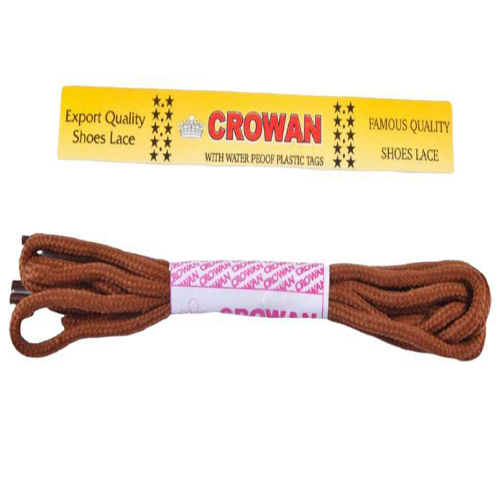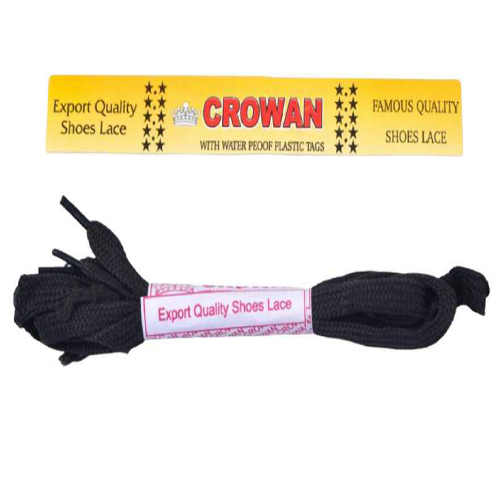Shoe Lace Sports

Shoe Lace Sports Round
Durable, flexible laces for securing shoes; available in various colors and lengths for style and fit.

Shoe Lace Sports Flat
Durable, flexible laces for securing shoes; available in various colors and lengths for style and fit.
### Shoe Lace Sports: The Essential Role of Laces in Athletic Footwear
**Shoe laces** play a crucial role in sports footwear, providing the necessary support, fit, and stability for athletes during their performance. Whether for running, basketball, soccer, or any other athletic activity, the right laces can enhance comfort and performance while reducing the risk of injury. This overview will explore the importance of shoe laces in sports, the types of laces best suited for athletic activities, and tips for choosing and maintaining them.
#### **Importance of Shoe Laces in Sports**
1. **Fit and Security**: One of the primary functions of shoe laces in sports is to secure the shoe on the foot. A well-laced shoe ensures that the foot remains in place, preventing slippage during dynamic movements. This is especially important in sports that involve rapid changes in direction, jumping, or sprinting, where a secure fit can enhance performance and reduce the risk of ankle sprains or other injuries.
2. **Support and Stability**: Properly laced shoes provide crucial support, particularly around the midfoot and ankle. This support helps maintain proper foot alignment, which is essential for optimizing athletic performance. Laces allow athletes to customize the tightness of their shoes according to their personal comfort levels and specific activity requirements.
3. **Comfort**: The right laces can enhance overall comfort by reducing pressure points on the foot. When laces are adjusted correctly, they help distribute pressure evenly, preventing discomfort during prolonged activity. Comfort is vital in sports, as it allows athletes to focus on their performance without being distracted by foot pain or irritation.
4. **Performance**: In competitive sports, every detail matters, including the fit of shoes. Laces that maintain their tension and do not loosen during play can significantly impact performance. Athletes can concentrate on their skills and tactics without the distraction of constantly adjusting their footwear.
#### **Types of Shoe Laces for Sports**
1. **Flat Laces**: These are the most common type used in athletic footwear. Flat laces provide a wide surface area for a secure fit and are available in various lengths, colors, and materials. They are popular in running shoes, sneakers, and cross-training footwear.
2. **Elastic Laces**: Elastic laces are designed to stretch, making them ideal for athletes who prefer the convenience of slipping their shoes on and off without tying laces. They provide a snug fit that adjusts with foot movement, making them popular among runners and triathletes.
3. **Round Laces**: Round laces are typically found in more formal athletic shoes or high-performance footwear. They tend to be durable and can create a tighter fit when laced securely, although they may slip more easily than flat laces.
4. **Reflective Laces**: For athletes who train in low-light conditions, reflective laces provide an added layer of safety by increasing visibility. These laces reflect light, helping to keep athletes visible during early morning or evening workouts.
5. **Heavy-Duty Laces**: For sports that involve rugged conditions, such as hiking or trail running, heavy-duty laces are essential. Made from stronger materials, these laces are designed to withstand wear and tear, ensuring they remain intact even in demanding environments.
#### **Choosing the Right Shoe Laces for Sports**
When selecting shoe laces for sports, consider the following factors:
1. **Length**: The correct length of shoe laces is essential for achieving a proper fit. The number of eyelets on the shoe and the type of lacing technique used will determine the ideal lace length. Most brands offer guides to help choose the appropriate size.
2. **Material**: Opt for laces made from durable, high-quality materials that can withstand the rigors of athletic activities. Materials like nylon and polyester are commonly used due to their strength and resistance to fraying.
3. **Color and Style**: Choose laces that complement your athletic footwear and reflect your personal style. Brightly colored or patterned laces can add a unique touch to your sports gear.
4. **Functionality**: Consider the specific needs of your sport. For example, if you participate in high-intensity activities, elastic laces may be more suitable for quick changes and convenience. For sports that require a secure fit, flat or heavy-duty laces may be preferable.
#### **Maintaining Shoe Laces in Sports**
To prolong the life of your athletic shoe laces, follow these maintenance tips:
1. **Regular Inspection**: Periodically check laces for signs of wear or fraying. Replace any damaged laces to ensure optimal performance and safety.
2. **Cleaning**: Keep laces clean to prevent dirt and grime buildup. Depending on the material, laces can be washed with soap and water or in a washing machine. Ensure they are completely dry before re-lacing shoes.
3. **Proper Storage**: When not in use, store shoes in a cool, dry place. Keeping laces untangled and flat can prevent creasing and tangling, extending their lifespan.
#### **Conclusion**
Shoe laces are a vital component of athletic footwear, significantly impacting comfort, fit, and performance. Understanding their importance and the various types available allows athletes to make informed choices that enhance their sporting experience. By selecting the right laces and maintaining them properly, athletes can ensure that their footwear remains secure, comfortable, and stylish, helping them perform at their best in every activity.